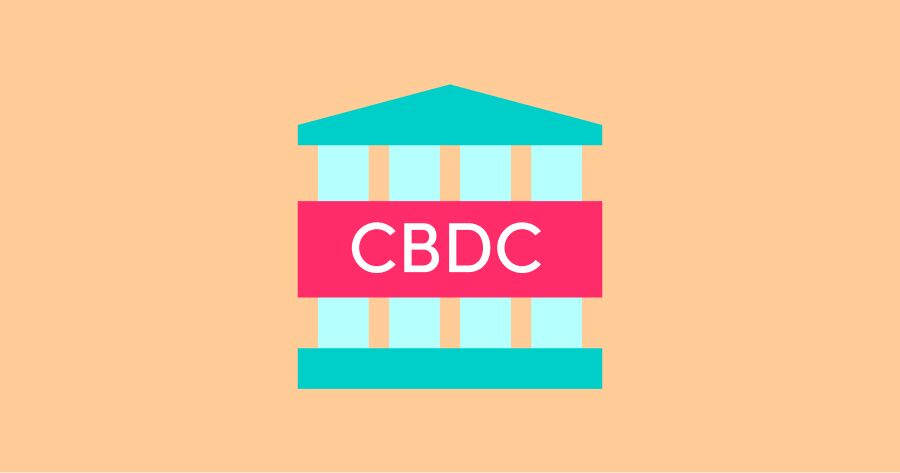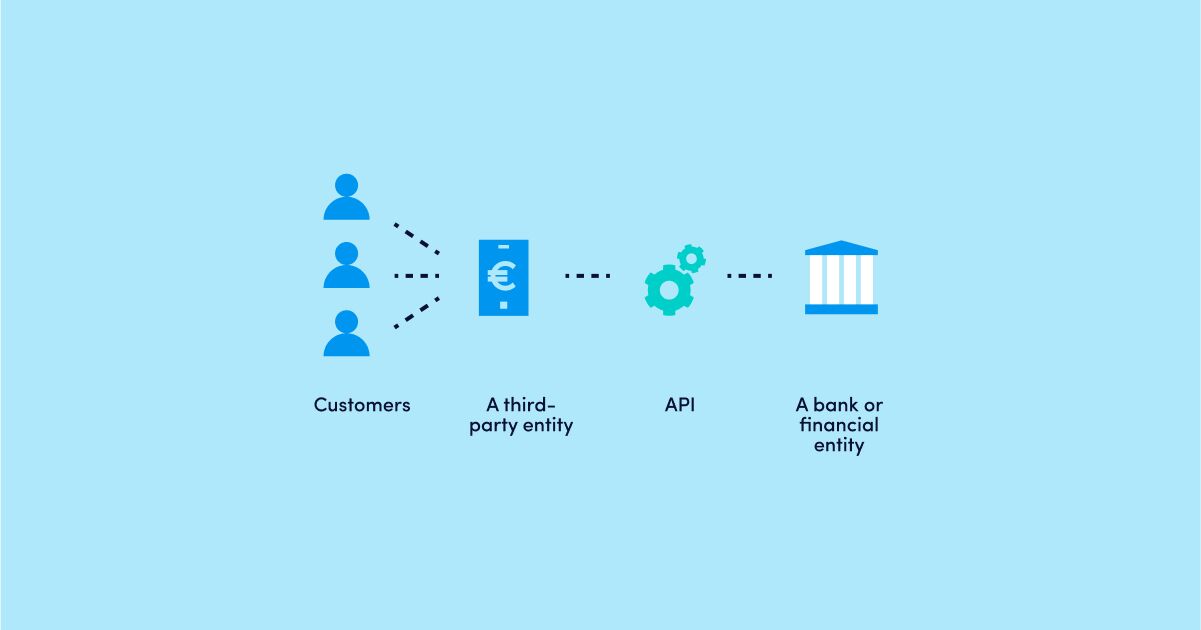Cryptocurrency is the modern paradigm that’s increasing in popularity around the world, as it moves closer and closer to the mainstream. Further to this, the sphere of cryptocurrencies is continuing to change, as it moves from being completely ungoverned to being much more regulated and controlled.
You see, governments and regulators are now focusing much more on cryptos, attempting to usher in new legislation that will allow matters to be controlled more tightly. However, both regulators and governments are aware of the many digital currency benefits and are continuing to introduce CBDC projects around the globe.
So, What Exactly IS CBDC?
To the uninitiated, CBDC stands for Central Bank Digital Currency and it represents a virtual currency that’s issued directly from a central bank. As stablecoins and cryptocurrencies have increased in popularity, the move was taken by the world’s central banks to create an alternative in order to play a bigger part in the ‘future of money’.
According to the Chief of the Bank for International Settlements (BIS), Benoît Cœuré, a global framework for the future of cryptocurrency should be agreed to during 2022, citing the fact that decentralised finance’s (DeFi) boom in popularity throughout 2021 represents something of a ‘wake up call’ for traditional banking establishments.
Moves Made By The European Central Bank (ECB)
These comments came in December of 2021, a year in which the ECB decided to launch the investigation phase of a European digital project. This phase should last for around 24 months, with the main aim being to address key issues relating to design and distribution.
Any European CBDC would need to satisfy the needs of European users, while simultaneously helping to prevent illegal activities and any destabilising impact on monetary policy. At point of writing, the ECB has approved the creation of a new oversight framework for electronic payments, to include crypto assets and stablecoins.
This new framework will be designed with a view to providing a supervisory framework to assess the efficiency and security of electronic payments. This will allow the ECB to oversee the full gamut of financial transactions, such as card payments, direct debits and credit transfers, as well as electronic wallet payments, digital payment tokens and e-money transfers.
Countries Around the World Focusing on CBDC
There’s much activity currently happening around the world when it comes to CBDC, with a large number of countries researching, testing and/or launching their own CBDC framework. In truth, there are 87 countries in the process of exploring CBDC, a number that equates to 90% of global GDP.
Let’s take a closer look at a breakdown of the status of the numerous nations focused on CBDC to get a better understanding of the global state of play.
Nations Who Have Already Launched
To date, there are 9 nations that have so far reached the point where they’re actually launching their own CBDC, with Nigeria being the latest one to make the move. The e-Naira is the first to originate outside of the shores of the Caribbean, with the other 8 being made up of 7 ECCU countries and The Bahamas.
The EC Dollar is the CBDC launched by the Eastern Caribbean Central Bank (ECCB), which has been in existence since March of 2021. This was in collaboration with DCash, bringing the currency to the islands of Antigua, Grenada, Barbuda, Saint Lucia, Saint Kitts, and Nevis.
The First National CBDC In the Bahamas
Around 5 months later, this was expanded to include the Grenadines and St Vincent, with December seeing the system being rolled out to the Commonwealth of Dominica and Montserrat. As of this point, this particular CBDC now serves a total of 7 countries.
This new currency represents a digital version of the Bahamian Dollar, with an financial ecosystem involving Authorised Financial Institutions (AFI) being created to allow retail customers to access services. This comes in the form of wallet services, commercial banks, payment service providers and money transmitter businesses.
Nigeria’s Blockchain-based eNaira
When looking at the only non-Caribbean-based CBDC – the eNaira – you see that it employs the same blockchain technology as both Ethereum and Bitcoin. The currency – like Bitcoin & Ethereum – is stored in a digital wallet and it’s able to be either transferred digitally or used for payment transactions.
This occurs at virtually no cost for anyone, no matter where they are in the world, but there are some distinct differences between eNaira and conventional cryptocurrencies. To begin with, the eNaira is subject to strict central bank access right controls.
The eNaira Isn’t Technically An Asset
Secondly, the eNaira doesn’t represent an asset in itself, rather a digital nationally-used currency that draws its worth from the Naira, a real-world currency, with which it shares parity.
At this point, this is the entirety of the countries that are either already launched or in the process of launching their own centralised digital currency. In our next section, we look at the countries in the pilot stage of proceedings.
Nations In the Pilot Stage
When taking an overview of countries currently participating in CBDC pilots around the world, there are 14 nations working towards reaching the point where they’re able to officially and fully launch. Let’s take a closer look at these nations in detail.
The Far East
● China is surging ahead with its CBDC known as the ‘Yuan’, with a virtual version having been already rolled out across a number of provinces.
● South Korea is currently in the midst of a 10-month pilot to test a distributed ledger/blockchain currency. The pilot’s first phase ran throughout 2021, with phase two running until June of 2022, focusing on digital asset purchases, offline payments and international remittances.
● Hong Kong is in the very early stages of its CBDC pilot, with their Monetary Authority having recently taken the initial steps in exploring a central bank digital currency and the creation of a technical whitepaper detailing the viability of the e-HKD.
● Thailand is keen to retain its financial stability, with no impact on monetary policy or incumbent banks. Therefore, its digital currency will be distributed via financial institutions and won’t pay interest. A pilot is set to commence in Q2 of 2022, with the private sector collaborating with technology developers.
● Singapore has not provided a timeline for its digital currency initiative, but their retail Project Orchid has been launched. The nation is also part of Project Dunbar along with Australia, Malaysia and South Africa.
Europe
● Sweden has been part of the process since it started, with aims to have a digital Krona in place by 2026.
● Lithuania is currently piloting the LBCOIN that’s based on NEM blockchain technology, as part of a larger European Central Bank’s (ECB) investigation phase of a Eurocoin. As yet, no clear timeline has been provided.
● Ukraine is currently piloting the electronic Hryvnia that will be governed by the country’s existing e-money rules. The pilot is said to be underway at some point in 2022.
The Middle East
● The United Arab Emirates (UAE) is working in conjunction with Saudi Arabia and has a 4-year plan ‘Project Aber’ in place that will run from 2023 to 2026, the creation of a digital fiat currency deemed to be a priority, with the use of inspection, insurance & monitoring systems planned.
● Saudi Arabia is included as part of Project Aber, as part of the very first dual-issued CBDC pilot that’s based on blockchain or distributed ledger technology (DLT). What makes this project unique is that it involves two central banks and 6 commercial banks from both countries.
Also in the pilot stage is the Reserve Bank of Australia, as part of Project Dunbar with Singapore’s Monetary Authority, the South African Reserve Bank, the Central Bank of Malaysia and the Bank for International Settlements Innovation Hub. This project will examine the development of Quorum and Corda.
Nations In the Development Stage
In our next section, we look at the jurisdictions that are currently in the development phase.
North America
● Canada has been active in looking into use cases, designs, policy questions and models with a view to building a CBDC. Via their ‘Model X Challenge’ they’re leveraging the power of three different Canadian universities. No roadmap has been created at this stage.
● The USA’s banking regulators are currently constructing a roadmap to achieve more clarity on crypto assets throughout 2022.
South America
● Venezuela in a bid to trim down its currency that’s been ravaged by chronic hyperinflation, the Bolivar Digital was introduced in October of 2021. This is the 2nd reconversion that’s occurred in the country within the last 3 years.
● Brazil intends to launch a CBDC pilot during 2022, with the completed version expected to arrive some time in 2024.
The Middle East
● Israel had decided back in 2017 that no digital currency would be issued in the near future, but they have since accelerated its research into a digital Shekel, with a view to creating more efficient systems of payment.
● Bahrain has plans to launch a digital Dinar, however, there’s nothing concrete in place as yet.
Africa
● Cambodia’s central bank launched a quasi-CBDC P2P system that’s based on the blockchain system, however, it doesn’t use tokens backed by the central bank. Project Bakong supports both the US dollar and the Cambodian Riel.
● Tanzania has announced its intention to launch its own CBDC. No roadmap has yet been detailed.
The Far East & South Pacific
● Japan is looking at the possibility of a digital Yen, however, any electronic currency needs to be simple in design and be able to coexist with current private sector payments.
● Palau in the South Pacific has joined Ripple with a view to creating a government-backed national stablecoin. Lots of activity is expected during 2022, however, nothing’s definite.
Europe & Asia
● Switzerland has stated that it is ready to launch a wholesale CBDC now thanks to its now Six Digital Exchange (SDX). There is, however, no news about a retail version of the digital currency.
● France authorities commissioned a Banque de France initiative to examine digital currencies and have now completed a test run of CBDC use. Nothing further is known at this time.
● Turkey’s central bank has established a new research platform to look into the digital version of Turkish Lira. Having completed a proof of concept phase, the next stage is set to begin with technology stakeholders.
● Russia has recently launched their pilot of the digital Ruble, with many banks taking part, including VTB, Sberbank, Alfabank and Gazprombank.
● India had considered banning the use of cryptocurrencies, although the government now intends to regulate them instead.
In addition to all these initiatives and projects, there are a number of other jurisdictions that are researching this technology. For instance, Indonesia, the UK, Pakistan, Iran, New Zealand and more are at the consultation stage for a future digital currency.
An Interesting Few Years Ahead For Crypto
So, as we can see there is increasing interest and uptake in the world of digital currencies and the next few years in this arena look set to be dynamic and pivotal for the future of the concept. One thing is for sure, while there might be certain interoperability issues to overcome in the long term, centralised digital currencies look like they’re here to stay.
About Advapay
Advapay is a technology company providing the Digital Core Banking platform to empower fintech clients or digital banks to start their businesses and accelerate digital transformation. The platform delivers all essential functionalities, a front-to-back system and a set of tools to customise and bring new integrations. With Advapay, potential and existing customers can connect either to the cloud-based SaaS or on-premise software. Besides the technical infrastructure, the company provides business advisory and fintech licensing services. Interested to learn more, please drop us a message








